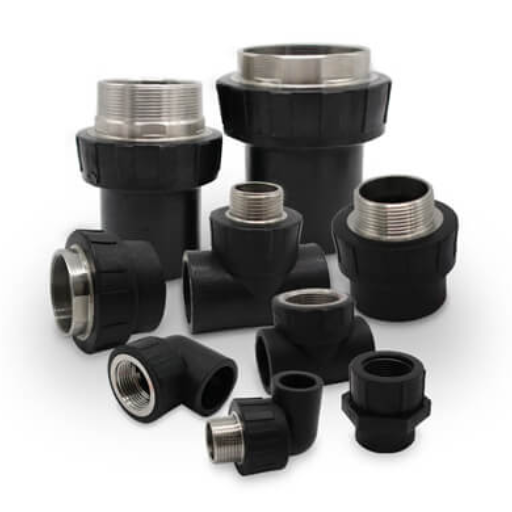Welcome to “Mastering Socket Fusion: A Comprehensive Guide to Plastic Pipe Fusion Tools and Techniques.” In this blog, we will clarify some things about socket fusion, which is widely used in plastic piping to create strong connections in pipe systems. This guide will give you a deep understanding of the tools needed, different methods used, and best practices for successful fusion. Even if you’re new here and just want an idea or two or have been doing it forever but still need help sometimes, this should cover all aspects required to become good at socket fusion while improving outcomes on projects across the board. Let us get into the nitty gritty of this fundamental process together so that, armed with knowledge; your skills can soar when working in plastic pipe welding.
What is Socket Fusion and How Does it Work?
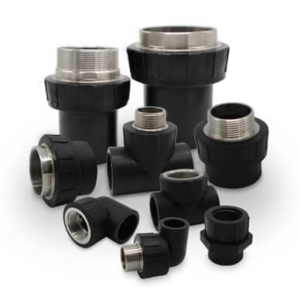
Image source: https://vimeo.com/
Socket fusion is a method for joining thermoplastic pipes and fittings by heating surfaces until they melt, then allowing them to cool together again. It entails heating the ends of a pipe or fitting using a heater, which ensures correct positioning and contact between them. Once materials have reached their desired heat level, they are taken off the heater and promptly joined under pressure so that the joint solidifies while cooling down after removal from heaters. With this technique, joints become leakproof, hence necessary for keeping up reliability in plumbing systems made from plastics, thus, the most commonly preferred technique for water supply distribution systems, among other industrial uses.
Understanding the Socket Fusion Process
The socket fusion process comprises several steps, guaranteeing a solid and durable bond between thermoplastic pipes and fittings. Firstly, the pipe ends and fitting is cleaned to remove any dirt or contaminants that could interfere with fusing them. Second, the heating tool is applied to both surfaces until they attain the right melting point. Typically, this temperature varies from 400°F to 500°F (200°C to 250°C) depending on what type of thermoplastics one may be using. Once they have melted for some time, take them out of the heat and pressurize them against each other quickly so that they can stick firmly. Finally, cooling down while solidifying completes the fusion process, where the joint formed becomes equally strong with the original material quality. This method requires correct procedure knowledge and timing for best results and long life span attainment in piping systems.
Fundamental Components: Pipe and Fitting
When socket fusion basics are discussed, you will find two main things involved: the pipe itself and its corresponding fitting. Thermoplastics like PVC (polyvinyl chloride), CPVC (chlorinated polyvinyl chloride) or HDPE(high density polyethylene) are usually used for making pipes due their strength against harsh environmental conditions such as corrosion resistance flexibility among others whereas fittings connect different lengths of tubes or change direction fluids pass through them among others functions depending on application requirements hence should have same diameter size & material too so that joint can be tight enough not to leak at all levels even under extreme pressure if need be according my understanding always select suitable quality materials which blend properly because failure in doing this would lead into weak connection points that won’t last long neither provide dependable service according my experience also it’s very important know what exactly is needed when specifying either a tube or socket should look like since failure understand these aspects may result improper installation thereby affecting performance as well overall reliability.
Essential Fusion Equipment
Specific tools are necessary to perform socket fusion successfully. Some of the primary tools are as follows:
- Fusion Machine: The fusion machine supplies the heat and pressure to melt the pipe with the fitting. It usually has temperature controls and can apply enough pressure through hydraulics during fusion.
- Heating Inserts: These inserts are used in the fusion machine to heat the ends of thermoplastic materials. They come in different sizes, which should match the diameter of the pipe being used to ensure even melting.
- Alignment Tools: Proper alignment is essential for a successful fusion. Clamps, guides, or other devices help hold pipes and fittings together at the right positions so that joints don’t become weak due to misalignment.
Correct equipment improves efficiency during fusing while also adding overall strength to piping systems, making it very important in any successful socket-fusion operation.
What Materials Are Suitable for Socket Fusion?
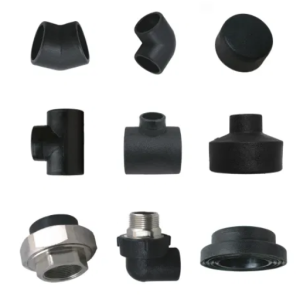
Socket fusion mainly deals with thermoplastics because they are flexible and quickly joined. Commonly used materials include:
- Polyvinyl Chloride (PVC): This type works best for plumbing and drainage systems due to its durability and resistance against corrosion.
- Chlorinated Polyvinyl Chloride (CPVC): If you need something more substantial than regular PVC or resistant to higher temperatures like those found in hot water tanks, then CPVC would be your choice material since it has an improved heat tolerance over standard PVC
- Polyethylene (PE): It’s widely known for its chemical resistance and flexibility, making it most suitable for gas distribution lines and water supplies where joints may require some bending during the installation process.
-
Polypropylene (PP): Should be applied when dealing with chemicals or high-pressure systems because pp offers excellent strength properties along with good thermal stability under such conditions
It should be understood that different thermoplastic materials have varied compatibility levels and performance indicators under varying pressures/temperatures; therefore, one needs to select what suits best based on these factors. Otherwise, the joint may fail after some time because it cannot hold or withstand certain conditions.
Choosing the Right Plastic Pipe
When choosing a suitable plastic pipe for your use, you should also consider the particular requirements for pressure, heat, and corrosion of the materials conveyed.
- Compatibility With Application: First of all it is essential to check if this type of plastics can work well with gases or liquids they are designed to transport. For example, PVC works best on drain waste vent systems, while CPVC should be used in hot water systems because it can withstand high temperatures.
- Rating of Pressure: Examine each type of pipe’s ratings and specifications concerning pressures encountered during usage. Polyethylene pipes are sometimes chosen because they are flexible enough to resist pressure, making them great for gas distribution and water supply.
- Environmental Concerns: Also, take note of environmental issues like UV rays exposure or extreme cold/heat conditions. Some materials, e.g., PP, show better performance at higher temperatures, whereas others tend to degrade faster when exposed to severe weathering situations.
By considering these factors carefully, it will be possible to identify and install the appropriate plastic pipe that meets your needs best in terms of durability and functionality.
HDPE vs. PPR: Which is Better?
I have discovered that each material has advantages when comparing HDPE (High-Density Polyethylene) and PPR (Polypropylene Random Copolymer) for my projects. Among other things, HDPE is valued for its superior strength-to-density ratio, excellent chemical resistance and impact resistance, and broad applicability at high-pressure and low-temperature environments, hence being regarded as suitable for water distribution systems and industrial applications. Conversely, PPR boasts higher thermal resistance and improved performance on hot water systems; it is also lightweight, making installations easier, and can be welded efficiently. In this regard, what matters most are specifics such as the nature of the fluid being conveyed, temperature considerations, and long-term sustainability expectations.
Thermoplastic Materials for Plastic Pipe Socket Fusion
The type of socket fusion used during thermoplastic piping significantly affects how effective or durable an installation will be. HDPEs and PP-Rs work best with socket fusions because they are highly compatible. The primary reason high-density polyethylenes are preferred over others, such as polypropylene random copolymers, is their strength properties, making them resistant to chemicals under high pressure. On the other hand, ease of use and better thermal performance, especially when dealing with hot water systems, make people choose polypropylene random copolymers more frequently than any other material during plumbing installations. Therefore, all said and done, what I should base my choice upon primarily depends on specific usage requirements. However, both materials can give good results after following proper fusing procedures.
How to Perform Socket Fusion: Step-by-Step Procedure
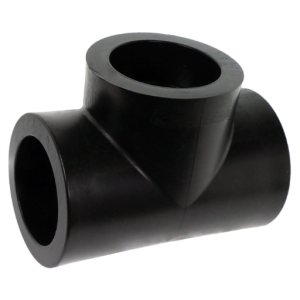
- Get the Necessary Tools and Materials: You will need a fusion machine, socket fittings, pipe, and a deburring tool. Both HDPE and PPR pipes should be clean and dry.
- Cutting the Pipe: Use a straight pipe cutter to make a neat cut on one end of the pipe. This ensures proper alignment during fusion.
- Pipe Deburring: Employing the deburring tool over the cut edge of the pipe removes any burrs and provides a smooth surface for joining.
- Aligning Fittings: Attach the fitting to the end of the cut pipe. Ensure that it is correctly aligned, as misalignment can cause joint failure.
- Heating Pipes and Fittings: Put one end of each into the heating element of the fusion machine. The time required for heating and temperatures should follow the manufacturer’s recommendations, typically between 400°F and 450°F for HDPE (and slightly lower temperature settings if using PPR).
- Assembling Parts: After heating them, remove those two parts from the heater quickly while pressing hard enough so they stick together tightly. Then, hold still until the materials cool down completely, making the joint strong enough.
- Inspect Joint Quality: Check out how okay the material has fused with another; ideally, there should be an even bead around the circumference, which means complete melting occurred during the welding process, thus resulting in sound connection, but if not, that indicates bad or no weld at all.
- Allow Cooling Period: Let it cool off completely before applying any pressure on newly joined sections or even using them at all. Different types require varied cooling times, which depend on the sizes being joined and the nature of the materials involved.
By following these steps, you will achieve strong joints through socket fusions that will last longer.
Preparing the Pipe and Fitting
It is imperative to clean the pipe and fitting before fusion and ensure that they are free from dirt and any other contaminants. Use a new piece of cloth or cleaner to wipe off any dirt, dust, or water on the joining surfaces. Also, look out for cracks or damages at the ends of pipes because these defects can weaken joints during fusing.
Then, ensure both pipes and fittings are cut to accurate lengths with smooth edges after cutting. Where necessary, employ a deburring tool that helps in getting rid of sharp edges or burrs that may obstruct proper sealing. The correct fitting positioning over a pipe should not be overlooked because small misalignments can result in weak joints. Following these procedures will prepare you to make solid and reliable fusions.
Using the Fusion Tool for Heating
To start heating with the fusion tool, I confirm that my machine has been set at the right temperature for the materials used. Commonly, this ranges around 260°F (127°C) up to 287°F (140°C) when dealing with most thermoplastics such as PPR. Then, I connect an appropriate heating element onto my fusion tool depending on the pipe size and fitting, which need to be joined together through the melting process. After preheating the device, I place the pipe alongside its corresponding part onto the heating plate, ensuring they are correctly aligned, then let them heat until their surfaces start softening – usually, it takes like 30 seconds to one minute before softening begins. Once they have reached enough warmth, remove them quickly and press to create a strong joint between the two pieces. This ensures perfect blending plus a reliable connection.
Joining and Cooling the Pipe and Fitting
To ensure that the materials fuse correctly, you must do one thing: keep pressing the heated pipe and fitting. This cooling time is expected to be about 5-10 minutes, with the joint remaining undisturbed. The idea behind not disturbing the cooled area is to prevent weakening or misalignment of the bond. After cooling has finished, examine for any blemishes or abnormalities in appearance at connection points; ideally, they should be smooth and even without gaps or bubbles, showing successful fusion. Perform a visual check before proceeding to pressure testing or further installation, which is the final step. Following these steps will help create strong connections that can withstand operational demands.
What are the Benefits of Using Socket Fusion?
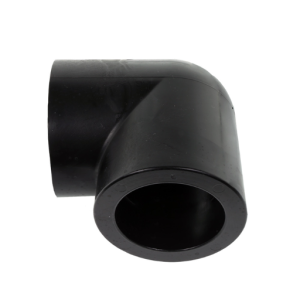
There are many benefits associated with using socket fusion to join plastic pipes and fittings; firstly, it provides strong joints that are leakproof and can handle significant changes in pressure and temperature, making them reliable over long periods. Secondly, this method is fast since no additional materials such as adhesives or fillers are needed during its process, which also saves on costs. Furthermore, when compared against other methods, socket fusions produce less waste because both sides use the same material, thus creating uniformity between them while bonding equally, too. Lastly, sockets have been designed so that they do not cause burns easily and are, therefore, safe even for plumbing works done within confined spaces where flammable substances are present, like industrial areas.
Advantages Over Other Fusion Techniques
Socket fusion features many pros over other methods of fusion, such as butt and electrofusion. It is important to mention that firstly it requires a simpler setup — fewer tools and minimal preparation, therefore, the process goes quicker and becomes more efficient. Unlike butt fusion, where the ends of pipes should be aligned accurately, which usually needs more complex equipment, this type can be performed with handheld tools, which makes it accessible for different applications. Secondly, equal heating reduces sockets’ inadequate warming and weak joint formation by uniformly heating surfaces united. In addition, socket fusions are smaller in size, occupying less space, thus making them more attractive visually so that the overall installation footprint is also decreased, unlike the aesthetic of other techniques used for connecting pipes. Finally, due to the absence of additional elements like electrofusion fittings, socket fusion often appears as a cheaper alternative, leading to lower project costs.
Durability and Reliability of Plastic Pipe Joints
From my observations, I can say that plastic pipe joints created using socket fusion have shown excellent reliability and durability. The evenness in heating ensures strong bonds throughout, which can resist mechanical stresses and environmental conditions over long periods. These connections have been found resistant to corrosion and chemical attacks besides UV degradation among many outdoor or industrial uses, according to some users’ experiences. Moreover, they rarely leak, thus adding to their dependability, mainly when used for prolonged periods without any problems occurring in terms of having peace of mind about them not failing after being installed correctly somewhere because, based on my experience, jointing plastic pipes together can last forever once done right.
Applications in Residential and Commercial Projects
Plastic pipe joints produced through socket fusion have become increasingly common in residential and commercial settings due to their versatility and dependability. They are often used for homes’ plumbing systems, irrigation, and drainage solutions, allowing for efficient water delivery with minimal leakage risk. In more significant buildings such as industrial facilities or those housing chemical substances where corrosion resistance is essential, these types of connections are preferred for use within HVAC systems or industrial plumbing applications, among others.
Moreover, with the development of city infrastructures worldwide, socket fusion has also found its place on public projects like municipal water supply systems and wastewater management services, which require a long life span amidst durability. This ability to adapt to various situations makes socket fusion joints suitable for many different areas, thus meeting multiple industry needs while guaranteeing quick installations and easy maintenance processes.
What Fusion Equipment is Needed for Socket Fusion?

Certain pieces of equipment must be used to complete a socket fusion joint successfully. The primary tools are a fusing machine that supplies the necessary heating elements for melting the pipe and fitting ends; a range of sockets – each corresponding with different sizes of pipes – which are needed to ensure correct alignment during fusing; temperature controllers that maintain appropriate heat levels while preventing overheating; personal protective gear such as gloves or goggles should also be worn. This equipment combination ensures dependable and long-lasting socket fusion joints.
Overview of Essential Tools and Machines
Many essential tools and machines create solid joints for socket fusion.
- Machine for Blending: This is the most central item. It is used to heat pipes and fittings that would be fused later. They come in various models to fit different sizes of pipes made from other materials, ensuring consistent heat is achieved all around.
- Blends Sockets: A set of mixing sockets with sizes corresponding to those of the pipes being joined ensures proper alignment during the fusing process while minimizing the chances of forming faulty joints.
- Temperature Regulator: Correct temperatures must be maintained if socket fusion is to succeed. A temperature regulator helps monitor and adjust heating levels so that materials are heated properly without overheating, which may result in a weak joint.
- Personal Protective Equipment (PPE): Safety measures should never be compromised during these procedures, so workers should wear gloves and goggles, among other things, to protect themselves against burns caused by hot objects or substances.
All these instruments work together towards efficiency and safety when conducting socket fusions, which leads to solid connections applicable in diverse areas.
Popular Brands and Products for Socket Fusion
McElroy, RIDGID, and Fusion Group are the market’s most popular socket fusion brands. This is because McElroy has a reputation for making machines that can be used with different sizes and types of pipes; they are also known to employ sophisticated methods like lasers to achieve greater accuracy during welding. Additionally, RIDGID products tend to last longer than others while still performing well, which is why many professionals prefer them; on the other hand, Fusion Group offers various tools designed specifically for creating solid joints quickly through fusion welding. Quality is not the only thing that sets these companies apart – any other brand cannot match their commitment to safety and continuous improvement within this industry.
Reference sources
- General Guidelines for Butt, Saddle, and Socket Fusion of Plastic Pipes
- Heat Fusion Joining Procedures
- Socket Fusion Joining for Polyethylene Pipe
Related Articles:Why Opt for Our HDPE Socket Fusion Fittings?



